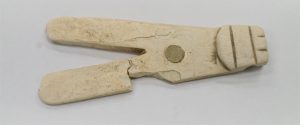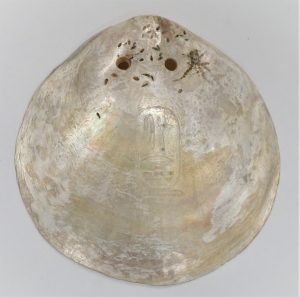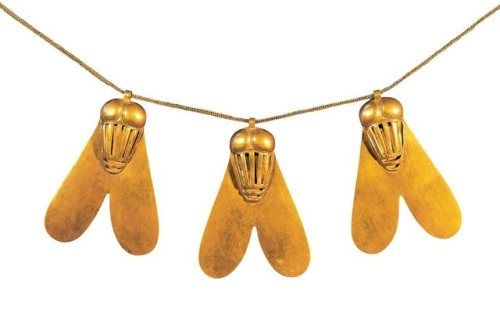Perhaps amongst the most unusual objects from ancient Egypt are golden flies. These objects are pendants that appear in the form of a stylised fly as seen from above. They are generally small, averaging 1.2cm in length, but larger examples do exist (http://www.liverpoolmuseums.org.uk/wml/collections/antiquities/ancient-egypt/item-296249.aspx).
 The earliest example of a golden fly is from Qustul, dating to the 1st Dynasty, and they are subsequently found from the Middle Kingdom and beyond. We know of approximately 500 examples, some of which were found on the same string. There are, however, many more examples of flies made from other materials, such as carnelian and faience, and these are found in the Predynastic Period and every subsequent period.
The earliest example of a golden fly is from Qustul, dating to the 1st Dynasty, and they are subsequently found from the Middle Kingdom and beyond. We know of approximately 500 examples, some of which were found on the same string. There are, however, many more examples of flies made from other materials, such as carnelian and faience, and these are found in the Predynastic Period and every subsequent period.
If the idea that Egyptians wore flies seems odd, modern interpretation of them might be seem stranger still. Two Egyptian soldiers, Ahmose son of Ibana and Amenemhab Mahu, recorded that they received golden flies from the king in their tombs. Historians have thus taken this to mean that golden flies were military awards given to soldiers for bravery in battle, with the fly symbolising persistence. This view has also been applied to flies of other materials. However, this interpretation ignores the fact that considerable numbers of flies, gold and otherwise, were found in the burials of women and children, who would not normally be associated with military activity in ancient Egypt. Likewise, gold lion-shaped pendants have also been interpreted as military awards as the same two soldiers recorded receiving them, despite many examples also being found in the burials of women and children.
 Lastly, there are approximately seventy oyster shell pendants which were inscribed with the name of a king and they have also been interpreted as military awards because one example was found with an archer’s wristguard (https://www.metmuseum.org/art/collection/search/556016). However, none of the others appear to have military association and gold oyster shell-shaped pendants are almost exclusively associated with women in ancient Egypt.
Lastly, there are approximately seventy oyster shell pendants which were inscribed with the name of a king and they have also been interpreted as military awards because one example was found with an archer’s wristguard (https://www.metmuseum.org/art/collection/search/556016). However, none of the others appear to have military association and gold oyster shell-shaped pendants are almost exclusively associated with women in ancient Egypt.
The aim of my research is to study these objects in greater detail. By focusing on their contexts and obtaining a wider view through analysis of their roles in archaeological, iconographic and textual sources, I hope to achieve a better understanding of the forms and functions of flies, lions and oyster shell pendants.
Watch this space and for a sneak peek, check out the Yellow Symposium (http://www.egyptologyonline.manchester.ac.uk/study/free-courses/yellow-symposia/)
 Taneash Sidpura is a part-time PhD student at the University of Manchester whose research interests are Egyptian religion and foreign affairs. He has given lectures throughout the UK, published articles and catalogued the Goodison Collection, Southport. He also works for the NHS as an operations manager, advising on commercial and finance strategy and risk management.
Taneash Sidpura is a part-time PhD student at the University of Manchester whose research interests are Egyptian religion and foreign affairs. He has given lectures throughout the UK, published articles and catalogued the Goodison Collection, Southport. He also works for the NHS as an operations manager, advising on commercial and finance strategy and risk management.







Recent Comments